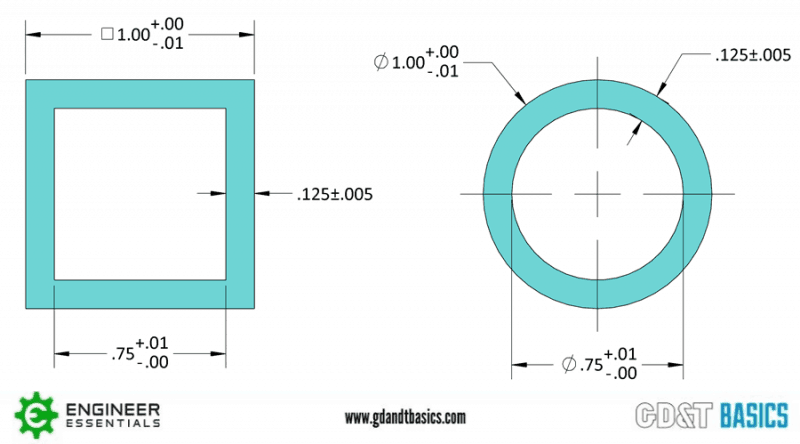

It was revised by MIL-STD-8A in 1953 which introduced the concept of modern GD&T "Rule 1". The modern standard can trace its roots to the military standard MIL-STD-8 published in 1949. Effective application of GD&T allows for parts to be verified by dimensional measurements, gauging, or by CMM. Together these standards allow for clear and concise detailing of dimensional requirements on a product drawing or electronic drawing package as well as the verification of the requirements on manufactured parts. It is complemented by ASME Y14.5.1 - Mathematical Definition of Dimensioning and Tolerancing Principles. It contains 12 sections which cover symbols and datums as well as tolerances of form, orientation, position, profile and runout. The particular standards specified that the orientation or location tolerance zone applies to the geometrical ideal contacting element, or to the axis of the geometrical ideal contacting cylinder.ASME Y14.5 is a complete definition of Geometric Dimensioning and Tolerancing. These standards specify that the actual surface, the actual axis, or the actual median face shall be contained in the tolerance zone. According to ISO 1101, tolerances of orientation or location also limit the form deviations of the toleranced features (surfaces or axes or median faces). Positional toleranced multiple patterns of features located by theoretical exact dimensions relative to the same datum system are regarded as a single pattern, if not otherwise specified. It distinguishes between composite tolerancing and single tolerancing where there are two tolerances of the same type (position or profile) specified for the same features.

The National Standard of the United States of America ASME Y14.5M-1994 specifies in addition to, or deviating from International Organization for Standardization (ISO) 1101 some symbols and drawing indications along with the rules specified.


 0 kommentar(er)
0 kommentar(er)
